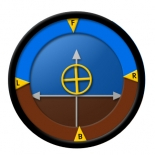
Tekscan Announces Enhanced SportsAT 2.0 Software
Unlimited Possibilities for Lower Extremity Injury, Balance, & Concussion Assessments
Tekscan, Inc., a leading provider of technologies for analyzing foot function, gait, and balance, announced the release of SportsAT™ 2.0 software for sports medicine clinicians and researchers. The software provides essential information for complete balance and concussion assessments.
SportsAT offers unlimited possibilities for lower extremity injury assessments, in addition to simplifying standardized concussion assessments through automation. Sports medicine professionals can complete objective baseline and post injury tests, quickly assess injury risk, identify asymmetries, and evaluate progress all within the same software. The software includes a built-in Balance Compass™ to aid in rehabilitation and track progress. Quantifying asymmetries and rehabilitation progress has never been easier. Initial software feedback from customers has been positive, not only finding the information helpful but the visual feedback for a patient to be invaluable. "I love the balance compass! It gives great visual information clinically about a client when they are standing on the mat that I am able to share with them", said Precious Hammond, Certified Athletic Trainer (ATC).
"The initial release of SportsAT was aimed at bringing objectivity to baseline and post-injury concussion assessments through automated Balance Error Scoring System (BESS) calculations and automated Sports Concussion Assessment Tool – 3rd Edition (SCAT3™). Now with the addition of the Balance Compass, we are providing users a complete solution for assessments and rehabilitation," said Peter Gantchev, Product Manager, Medical Division at Tekscan. "The ability to quantify asymmetries and evaluate rehabilitation progress through SportsAT helps clinicians feel more confident about safe return-to-play decisions."
Chronic ankle instability, asymmetries and other lower limb injuries are at the forefront of sports related research and news. Time-to-boundary calculations have been associated with chronic ankle instability evaluation and other lower extremity stability assessments. With an automated time-to-boundary calculation there's no need to export numbers for advanced analysis. The center of force movement and velocity provides key insights in stability.
In 2014, researchers at the University of Delaware validated that the Balance Error Scoring System (BESS) portion of the software was comparable to their traditional method for scoring the BESS with trained testers. SportsAT is now available for shipment worldwide. For more information, go to https://www.tekscan.com/medical/sportsat.